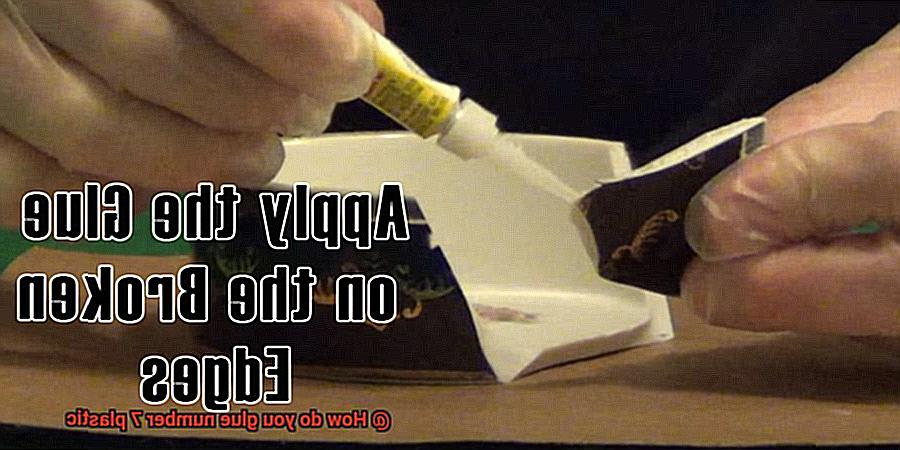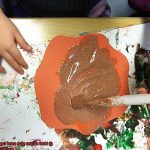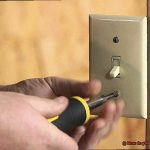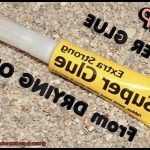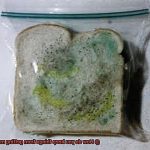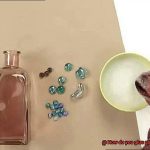In conclusion, gluing number 7 plastic may seem daunting at first, but with the right adhesive and proper preparation, you can achieve strong and reliable bonds.
Remember to choose the appropriate adhesive, clean and roughen the plastic surface, and employ the right techniques for your specific project. With a little patience and practice, you’ll become a master at gluing number 7 plastic in no time.
So, go ahead, unleash your creativity and fearlessly tackle any repair or crafting endeavor involving this versatile material.
What is Number 7 Plastic?
Contents
- 1 What is Number 7 Plastic?
- 2 Adhesive Options for Gluing Number 7 Plastic
- 3 Cyanoacrylate (Super Glue)
- 4 Two-Part Epoxy Adhesive
- 5 Considerations When Choosing an Adhesive
- 6 Traditional Solvent-Based Glues and Hot Melt Adhesives
- 7 Selecting the Right Adhesive
- 8 Application and Environmental Conditions
- 9 Conclusion
Number 7 plastic, also known as “Other” plastic, is a diverse category that includes various types of plastic materials that do not fit into the other commonly used categories. It is identified by the recycling symbol with a number 7 surrounded by three arrows forming a triangular shape. Number 7 plastic presents unique challenges for recycling due to the different types of resins used in its production.
Here are some key points to understand about Number 7 Plastic:
- Types of Number 7 Plastic: Number 7 plastic encompasses materials such as polycarbonate (PC), polylactic acid (PLA), and biodegradable plastics. Each material has its own unique properties and characteristics.
- Polycarbonate (PC): This strong and durable type of number 7 plastic is commonly found in water bottles, food storage containers, and electronics. However, concerns have been raised about potential leaching of bisphenol A (BPA) from PC plastics.
- Polylactic Acid (PLA): Derived from renewable resources like cornstarch or sugarcane, PLA is considered more environmentally friendly than traditional plastics. It is often used in food packaging, disposable cutlery, and compostable products.
- Biodegradable Plastics: Some number 7 plastics are designed to break down over time through natural processes, reducing their environmental impact. However, the effectiveness of biodegradation can vary, and specific conditions or facilities may be required for proper decomposition.
- Recycling Challenges: Number 7 plastic poses challenges for recycling due to the different types of resins used. Specialized equipment and facilities are often necessary to effectively recycle this type of plastic.
- Recycling Requirements: Check with local recycling facilities or waste management programs to determine if they accept number 7 plastic for recycling. Separating number 7 plastic from other types of plastics may be necessary in some cases.
- Gluing Number 7 Plastic: When gluing number 7 plastic, choose adhesives specifically designed for the type of plastic being used. Cyanoacrylate (super glue) and epoxy adhesives are commonly recommended for bonding polycarbonate.
Adhesive Options for Gluing Number 7 Plastic
When it comes to gluing Number 7 plastic, also known as miscellaneous plastics, there are several adhesive options available that can provide a strong and durable bond.
- Epoxy adhesives: These adhesives are known for their high strength and versatility. They consist of a resin and a hardener that need to be mixed before application. Epoxy adhesives form a bond with Number 7 plastic that can withstand heat, chemicals, and moisture. It is important to carefully follow the manufacturer’s instructions for best results.
- Cyanoacrylate glue: Also known as super glue, this adhesive is quick-drying and provides an instant bond. It works well with many types of plastics, including Number 7 plastic. However, it is important to test the adhesive on a small area first to ensure compatibility.
- Polyurethane adhesives: These adhesives offer flexibility and durability. They have excellent bond strength and resistance to water, making them a good choice for certain applications involving Number 7 plastic. Read the manufacturer’s instructions and consider your specific project requirements before use.
- Specialized adhesives: There are adhesives specifically designed for bonding Number 7 plastic. These often come in two-part systems, similar to epoxy adhesives, and offer exceptional bonding strength. However, they may require longer curing times or specific application techniques, so it’s important to carefully follow the manufacturer’s instructions.
Regardless of the adhesive chosen, proper surface preparation is key. Clean the surfaces to be bonded thoroughly, removing any dirt, grease, or residue. If needed, roughen the surface slightly with sandpaper for improved adhesion. Apply the adhesive evenly and ensure proper contact between the surfaces. Finally, give it enough curing time as specified by the manufacturer before subjecting the bonded item to any stress or load.
Cyanoacrylate (Super Glue)
Cyanoacrylate, commonly known as Super Glue, is a versatile adhesive that can be used to bond a variety of materials, including number 7 plastic, also known as polycarbonate. This type of plastic is commonly found in items such as water bottles, food containers, and electronic device casings. When it comes to gluing number 7 plastic, cyanoacrylate is an excellent choice due to its fast-setting nature and strong bonding properties.
The main advantage of using cyanoacrylate for bonding number 7 plastic is its quick-drying capability. Unlike other adhesives that can take hours or even days to fully cure, cyanoacrylate forms a strong bond within seconds of application. This makes it perfect for projects that require immediate results or for situations where you need a quick fix.
To effectively glue number 7 plastic with cyanoacrylate, it is crucial to start by cleaning the surfaces that will be bonded. Removing any dirt, dust, or grease is important as it can interfere with the bonding process. A mild detergent or alcohol solution can be used to clean the surfaces, followed by thorough drying.
Next, apply a small amount of cyanoacrylate glue to one of the surfaces. It is important not to use excess glue, as this can lead to messy drips and may result in a weak bond. A thin layer of adhesive is typically sufficient for most applications.
After applying the glue, firmly press the surfaces together and hold them in place for a few seconds. The adhesive will quickly set and establish a strong bond between the two surfaces. Keeping the parts steady during this time is essential to ensure proper bonding.
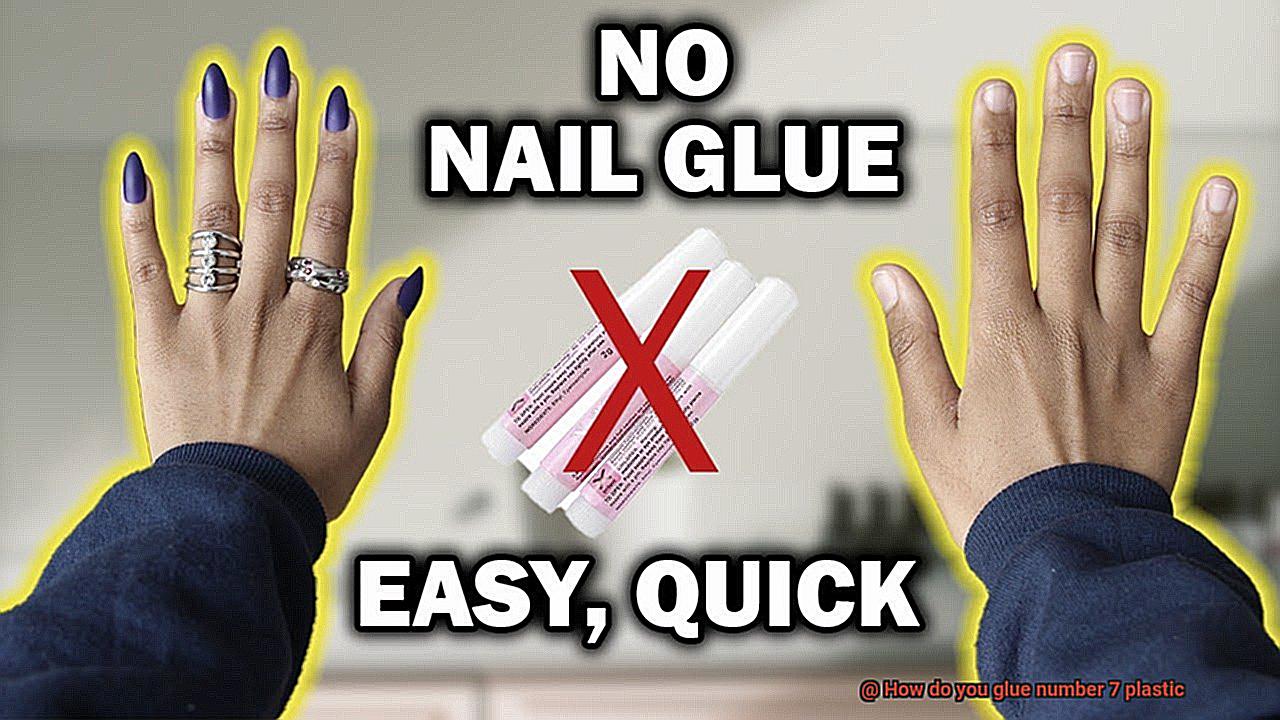
While cyanoacrylate is generally effective at bonding number 7 plastic, it is important to note that its performance may vary depending on the specific type and condition of the plastic being glued. Some polycarbonate plastics have additives or coatings that can affect the adhesive’s ability to bond effectively. To ensure success, it is advisable to test the glue on a small, inconspicuous area before applying it to the entire surface.
Additionally, cyanoacrylate may not be suitable for applications involving high temperatures or constant exposure to moisture. These conditions can weaken the bond over time. If you anticipate such challenges, it may be necessary to explore alternative adhesive options specifically designed for these conditions.
Two-Part Epoxy Adhesive
Two-part epoxy adhesive is a powerful and versatile solution for bonding number 7 plastic. This adhesive consists of two components – a resin and a hardener – that are mixed together just before application. When combined, the epoxy starts to cure and forms a robust bond between the plastic surfaces.
Selecting the right two-part epoxy adhesive is crucial for successful bonding. It’s essential to choose an adhesive that is specifically formulated for bonding plastics. Not all epoxy adhesives are suitable for plastics, so it’s important to check the product label or consult with an expert to ensure you have the right adhesive.
Proper preparation of the plastic surfaces is key to achieving a strong bond. Thoroughly clean the surfaces using a mild detergent or rubbing alcohol to remove any dirt, grease, or contaminants that could compromise the adhesive’s effectiveness. Make sure to dry the surfaces completely after cleaning.
To enhance the bond strength, gently roughen the plastic surfaces using sandpaper or an abrasive material. This step increases the surface area for the epoxy to adhere to, resulting in a stronger bond. However, caution should be exercised not to damage or weaken the plastic while sanding.
The next step is to mix the epoxy components according to the manufacturer’s instructions. Follow the recommended ratio of resin to hardener and blend them thoroughly until well combined. It’s important not to mix more adhesive than you can use within the working time specified by the manufacturer, as epoxy adhesives typically have limited pot life.
Once the epoxy is properly mixed, apply a thin and even layer onto one of the plastic surfaces using a brush or applicator. Ensure that you cover the entire area that needs to be bonded. Then, firmly press the second plastic surface against the adhesive-coated surface. Apply pressure evenly across the entire bond area, using clamps or other means if necessary, to ensure a secure bond.
Allow the epoxy adhesive to cure as per the manufacturer’s instructions. Keep in mind that curing times may vary depending on the adhesive and environmental factors such as temperature and humidity. During the curing process, it’s important to avoid disturbing or stressing the bond to achieve optimal results.
Considerations When Choosing an Adhesive
When it comes to choosing an adhesive for number 7 plastic, there are several important considerations to keep in mind. Let’s explore these factors in more detail:
- Compatibility with the material: Number 7 plastics encompass a diverse range of materials, each with their own unique chemical composition and surface characteristics. It is crucial to choose an adhesive that is compatible with the specific type of number 7 plastic you are working with. Some adhesives may react chemically with certain types of plastics, leading to weak bonds or damage to the plastic itself. To ensure a strong bond, consult the manufacturer’s guidelines or conduct compatibility tests before selecting an adhesive.
- Strength and durability: The strength and durability of the bond required for your specific application should also be considered. Different adhesives offer varying levels of bond strength, ranging from temporary to permanent bonds. Assess whether a temporary bond will suffice or if a stronger, more permanent bond is necessary. For temporary bonds, cyanoacrylate (super glue) can be a suitable option, while structural adhesives like methacrylates or urethanes are ideal for permanent bonds.
- Resistance to environmental factors: Depending on the intended use of the glued plastic, it is important to consider whether the adhesive offers resistance to factors such as moisture, temperature fluctuations, or UV exposure. Some adhesives may perform better in outdoor or high-humidity environments. For outdoor applications or environments with high moisture levels, polyurethane adhesive is a good choice.
- Ease of use and application method: Consider the ease of use and application method of the adhesive. Some adhesives come in convenient forms such as tapes or pre-mixed solutions, while others may require mixing or curing processes. Choose an adhesive that aligns with your skill level and the tools available to you. Double-sided tape is perfect for easy application, while two-part epoxies are suitable for more complex bonding needs.
- Safety considerations: It is crucial to prioritize safety when working with adhesives. Some adhesives may contain harmful chemicals or emit toxic fumes during the application and curing process. Read and follow the manufacturer’s safety instructions and wear appropriate protective equipment when working with certain adhesives. Low-VOC or water-based adhesives are good options for reducing environmental and health impacts.
Traditional Solvent-Based Glues and Hot Melt Adhesives
Traditional solvent-based glues and hot melt adhesives have distinct characteristics when it comes to bonding number 7 plastic. Let’s delve into the comparison of these two adhesive types in more detail.
Strength is a crucial factor in adhesive performance. Traditional solvent-based glues generally provide a strong bond, especially when the correct adhesive is chosen for the specific type of plastic. On the other hand, hot melt adhesives also offer a strong bond if used correctly.
Flexibility is another important consideration. Solvent-based glues tend to be more flexible, allowing for some movement or flexibility in the bonded plastic. In contrast, hot melt adhesives can be more rigid and may not offer as much flexibility.
Cost is often a determining factor in adhesive selection. Solvent-based glues are generally more affordable compared to hot melt adhesives, although the cost may vary depending on the specific brand and formulation of the adhesive.
Application methods differ between these two types of adhesives. Solvent-based glues are usually applied by brush or nozzle, whereas hot melt adhesives are applied using a hot glue gun or other heated application devices.
Now let’s examine the pros and cons of each adhesive type.
Traditional solvent-based glues offer a strong bond when the correct adhesive is chosen, flexibility in the bonded plastic, and affordability. However, they come with environmental impact and potential health hazards due to solvents, compatibility issues with certain plastics, and longer curing and drying time.
Hot melt adhesives have advantages such as fast setting time, high bond strength, and versatile application options. However, they have limitations in terms of flexibility in the bonded plastic, may require specific formulations for optimal bonding results, and can be more expensive than solvent-based glues.
Selecting the Right Adhesive
Selecting the right adhesive for a project can be a daunting task. With so many options available, it’s important to consider factors such as strength, flexibility, cost, application method, environmental impact, and compatibility with the specific type of plastic being used.
When it comes to bonding number 7 plastic, also known as miscellaneous plastics, there are several key points to keep in mind:
- Compatibility: Number 7 plastic encompasses various types of plastics that don’t fall under the other numbered categories. It is crucial to choose an adhesive specifically designed for bonding this type of plastic to ensure a strong and durable bond.
- Bonding Properties: Consider the type of bond you want to achieve. Different adhesives offer different properties, such as instant bonding, slow-setting, or flexible bonds. Determine the requirements of your project and select an adhesive that meets those needs.
- Surface Preparation: Before applying any adhesive, prepare the surface of the number 7 plastic by ensuring it is clean, dry, and free from contaminants or oils that could interfere with adhesion. Lightly abrading the surface with sandpaper can also improve adhesion.
- Suitable Adhesives: Some common types of adhesives suitable for bonding number 7 plastic include epoxy adhesives, cyanoacrylate (super glue), and polyurethane adhesives. These options offer good bonding strength and flexibility.
- Follow Instructions: It is crucial to follow the manufacturer’s instructions when using any adhesive. Apply the recommended amount and allow sufficient curing time for optimal results. Applying too much or too little adhesive can affect the bond strength.
- Test Before Application: Before applying the adhesive to the entire surface, it is advisable to test it on a small area to ensure compatibility and desired results.
- Consider Mechanical Fastening: In some cases, alternative fastening methods such as screws, rivets, or clips may be more suitable for joining number 7 plastic parts together. These methods provide a secure and reliable bond without relying solely on adhesives.
- Seek Professional Advice: If you are unsure about which adhesive to use or need assistance with bonding number 7 plastic, consult with a professional or contact the adhesive manufacturer for guidance. Their expertise can help you select the most suitable adhesive for your specific application.
Application and Environmental Conditions
Gluing number 7 plastic requires careful consideration of several factors to achieve a successful bond. To begin, proper surface preparation is crucial. Thoroughly clean the plastic to remove any dirt, dust, grease, or contaminants that could hinder the bonding process. A mild detergent or rubbing alcohol can effectively clean the surface. Additionally, lightly sanding the plastic with fine-grit sandpaper can create a rougher texture, enhancing the adhesive’s grip.
Next, selecting the right adhesive is essential. Not all adhesives are suitable for number 7 plastic, so choose one specifically designed for this type of plastic. Epoxy adhesives are often recommended due to their excellent adhesion properties and versatility. They can provide strong bonds on various types of plastics, including number 7 plastics.
Consideration of environmental conditions is also critical. The temperature and humidity during application can significantly impact adhesive performance. It is best to work in a controlled environment with moderate temperatures (around 70-80°F or 21-27°C) and low humidity levels (ideally below 50%). Extreme temperatures or high humidity can affect the curing process, leading to weaker bonds or prolonged curing times.
Moreover, it is important to consider the specific requirements of the application. If the bonded plastic parts will experience vibrations, shocks, or other mechanical stresses, choose an adhesive with high impact resistance and flexibility. Conversely, if the application involves exposure to chemicals or moisture, opt for an adhesive with excellent chemical resistance and waterproof properties.
Conclusion
When it comes to gluing number 7 plastic, you might encounter a few challenges. However, fear not, for there are solutions that can help you achieve a strong and lasting bond. One option is to use an adhesive specifically designed for bonding plastics. These adhesives contain special ingredients that allow them to effectively adhere to number 7 plastic surfaces.
Another method involves using a heat gun or soldering iron to melt the plastic slightly, creating a rough surface for better adhesion. Once the plastic is heated, apply the adhesive and press the pieces together firmly. Allow sufficient time for the adhesive to dry and cure before handling or using the glued item.
It’s important to note that not all glues are suitable for number 7 plastic. Avoid using superglue or epoxy as they may not bond well with this type of plastic. Instead, opt for adhesives like cyanoacrylate or polyurethane-based glues that are specifically formulated for bonding plastics.
In conclusion, gluing number 7 plastic requires careful consideration and the use of appropriate adhesives. By following these tips and techniques, you can confidently tackle any project involving this type of plastic and achieve successful results.

